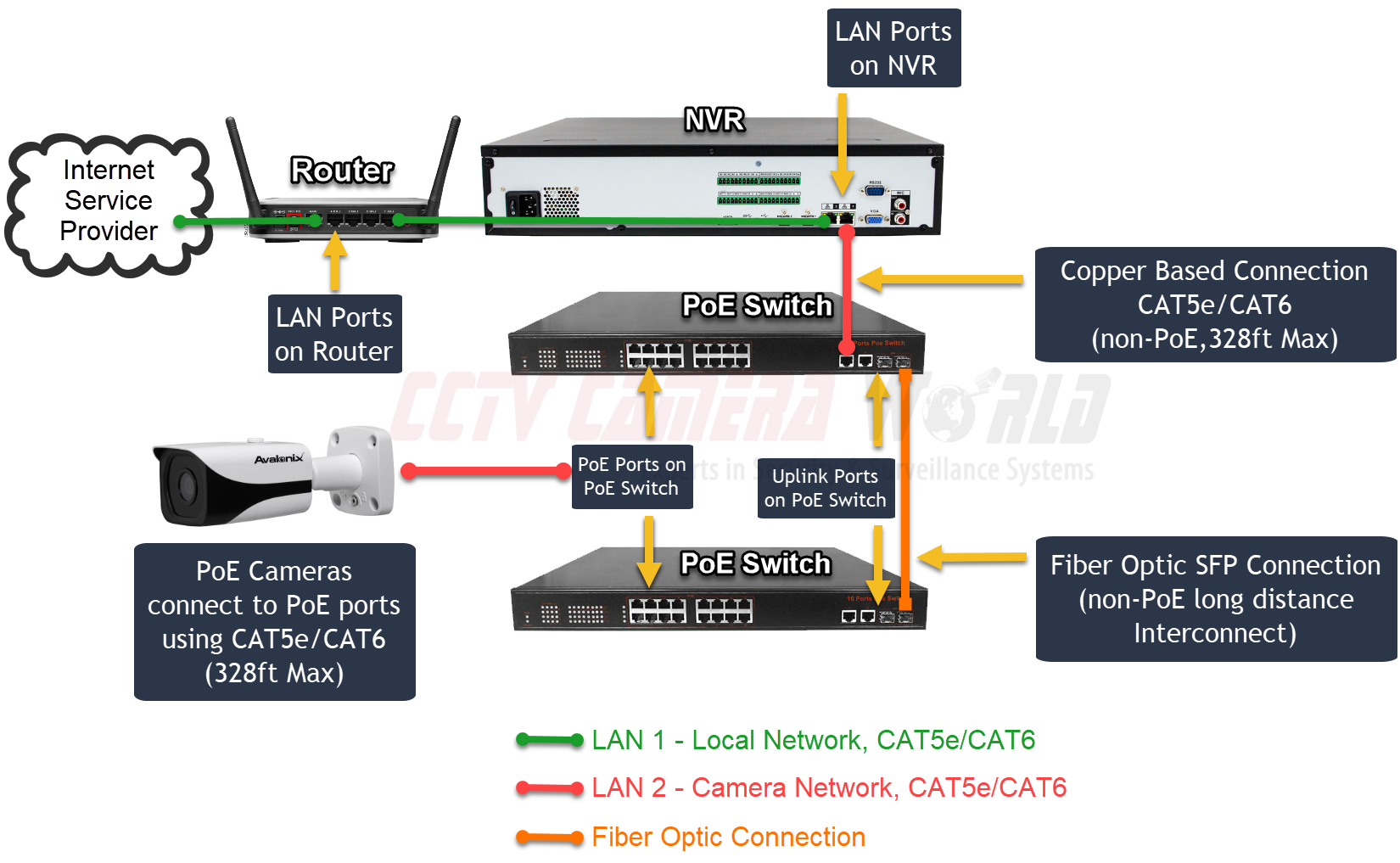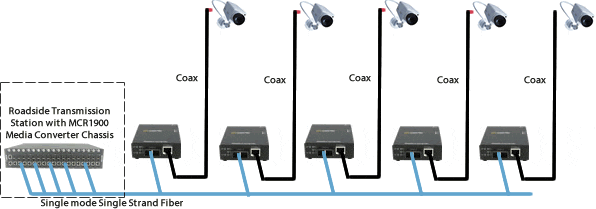Why a Fence Detection System Should Be Part of Your Comprehensive Security Strategy
Why a Fence Detection System Should Be Part of Your Comprehensive Security Strategy
Blog Article
Just How CCTV Cameras With Fiber Optic Outcome Improve Long-Distance Surveillance
CCTV electronic cameras furnished with fiber optic result stand for a substantial innovation in long-distance surveillance modern technology, using exceptional advantages over typical systems. By leveraging the properties of light transmission through fiber optics, these video cameras make sure high-definition video clip top quality remains undamaged throughout extensive ranges while properly mitigating electromagnetic interference - cctv fibre optic cable.

Comprehending Fiber Optic Modern Technology
Fiber optic modern technology is significantly used in long-distance tracking applications as a result of its remarkable capability for data transmission. This innovation uses slim hairs of glass or plastic fibers to transmit data as light signals, substantially minimizing the depletion commonly linked with conventional copper cable televisions. The intrinsic buildings of fiber optics enable for the transmission of large quantities of data over substantial distances without loss of quality, making it an optimal choice for applications calling for reliable interaction.
The principle of total inner reflection helps with the efficient transmission of light within the fiber, making certain high transmission capacity and rate. Unlike electric signals in metal cable televisions, fiber optics are unsusceptible to electromagnetic interference, enhancing the honesty of data transmission. This characteristic is specifically valuable in environments with high degrees of electrical noise, such as industrial settings or urban areas.
Additionally, fiber optic cables are lighter and much more versatile than their copper equivalents, which simplifies installation and lowers structural tons. With their resilience and resistance to ecological aspects, fiber optics are appropriate for exterior applications, therefore extending the reach of checking systems. Therefore, fiber optic modern technology is coming to be a cornerstone in modern-day surveillance solutions, efficiently dealing with the obstacles of long-distance tracking.
Advantages of Fiber Optic CCTV
Utilizing fiber optic technology in CCTV systems offers various advantages that enhance monitoring capacities. One of the primary benefits is the capacity to transfer high-definition video over cross countries without significant signal degradation. Unlike traditional copper wires, fiber optics can keep video quality over extensive runs, making them perfect for huge properties or remote monitoring locations.
In addition, fiber optic cords are much less vulnerable to electromagnetic disturbance, which can distort signals in traditional systems. This makes sure clearer pictures and uninterrupted service, important for protection surveillance. Moreover, optical fiber are naturally more secure, as obstructing signals requires customized devices, thus providing an extra layer of defense against unauthorized gain access to.
The lightweight and portable nature of fiber optic cables additionally streamlines installment, making it possible for less complicated directing via limited spaces and minimizing overall labor expenses. Their resilience makes them resistant to environmental aspects such as dampness and temperature fluctuations, expanding the life expectancy of the monitoring system.
Lastly, fiber optic systems can support a higher number of cameras on a single network, optimizing resources and providing scalability for future expansion. These benefits make fiber optic CCTV systems an exceptional option for modern-day surveillance requirements.
Contrast With Typical Equipments
When contrasting CCTV systems, traditional configurations often drop brief in numerous key locations, specifically in regards to range and signal stability. Traditional coax cable systems typically face significant signal deterioration over long ranges, restricting effective tracking ranges to around 300 feet (cctv fibre optic cable). Past this threshold, photo clearness diminishes, causing potential dead spots and decreased surveillance efficiency
On the other hand, fiber optic systems maintain signal integrity over a lot greater ranges, often surpassing a number of miles without loss of top quality. This is largely due to their ability to transmit data as light signals, which are less at risk to electro-magnetic interference than electric signals utilized in typical systems.
Furthermore, standard systems need more considerable maintenance and troubleshooting because of their vulnerability to ecological elements such as wetness and electromagnetic noise. Fiber optic systems, conversely, offer enhanced resilience and reduced maintenance costs, as they are less susceptible to damages.
Applications in Long-Distance Tracking
The benefits of modern CCTV systems in preserving signal integrity over long ranges open a vast range of applications for long-distance monitoring. One significant application remains in metropolitan monitoring, where towns release fiber optic CCTV systems to keep track of public rooms, boosting safety and security and preventing criminal task. These systems supply continual, premium video feeds that are vital for reliable legislation enforcement and emergency situation response.
Another vital application is in commercial settings, where remote surveillance of manufacturing get redirected here procedures and hazardous locations is essential. Fiber optic CCTV can hold up against severe atmospheres and transmit data over fars away without loss of quality, permitting real-time oversight and lessening risks to personnel.
Additionally, vital framework such as flight terminals, railways, and pipes benefit from long-distance CCTV monitoring. Security teams can look after huge locations from streamlined control spaces, making sure fast feedback to any incidents.
Moreover, in agricultural settings, farmers utilize long-distance CCTV to keep an eye on plants and animals, helping to enhance efficiency and security. Overall, the adaptability and reliability of fiber optic CCTV systems make them crucial across different industries, enabling dig this comprehensive security services tailored to specific demands.
Future Patterns in Security Innovation
Just how will innovations in technology improve the landscape of security? The future of monitoring innovation is positioned for significant makeover, driven by advancements such as artificial knowledge (AI), artificial intelligence, and side computing. These technologies enable real-time information analysis, enabling fast recognition of prospective threats and boosted situational awareness.
AI-powered analytics will certainly improve the precision of facial recognition systems, lowering incorrect positives and enabling extra reliable tracking of people. Moreover, the assimilation of Net of Points (IoT) gadgets will help with a seamless network of interconnected surveillance systems, improving surveillance abilities across large locations.
An additional fad is the shift in the direction of cloud-based storage remedies, which supply scalable information administration and access. This will certainly enable organizations to store large quantities of video data without the constraints of physical storage space, while making sure that information is conveniently retrievable.

Conclusion
In final thought, CCTV cameras geared up with fiber optic outcome stand for a significant development in long-distance tracking capabilities. As security modern technology proceeds to advance, Check Out Your URL the fostering of fiber optic options will likely play a crucial function in enhancing safety across diverse applications.
Report this page